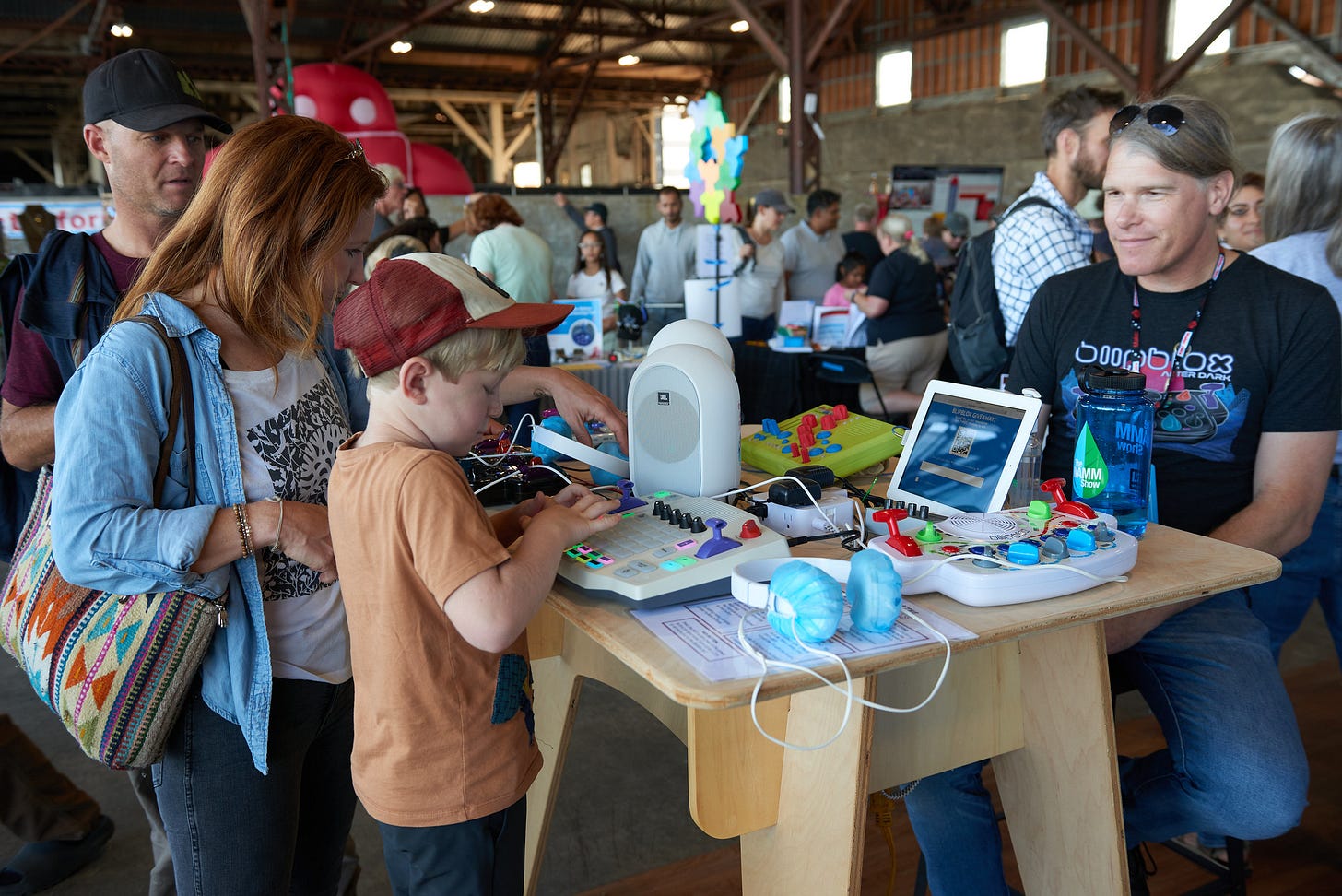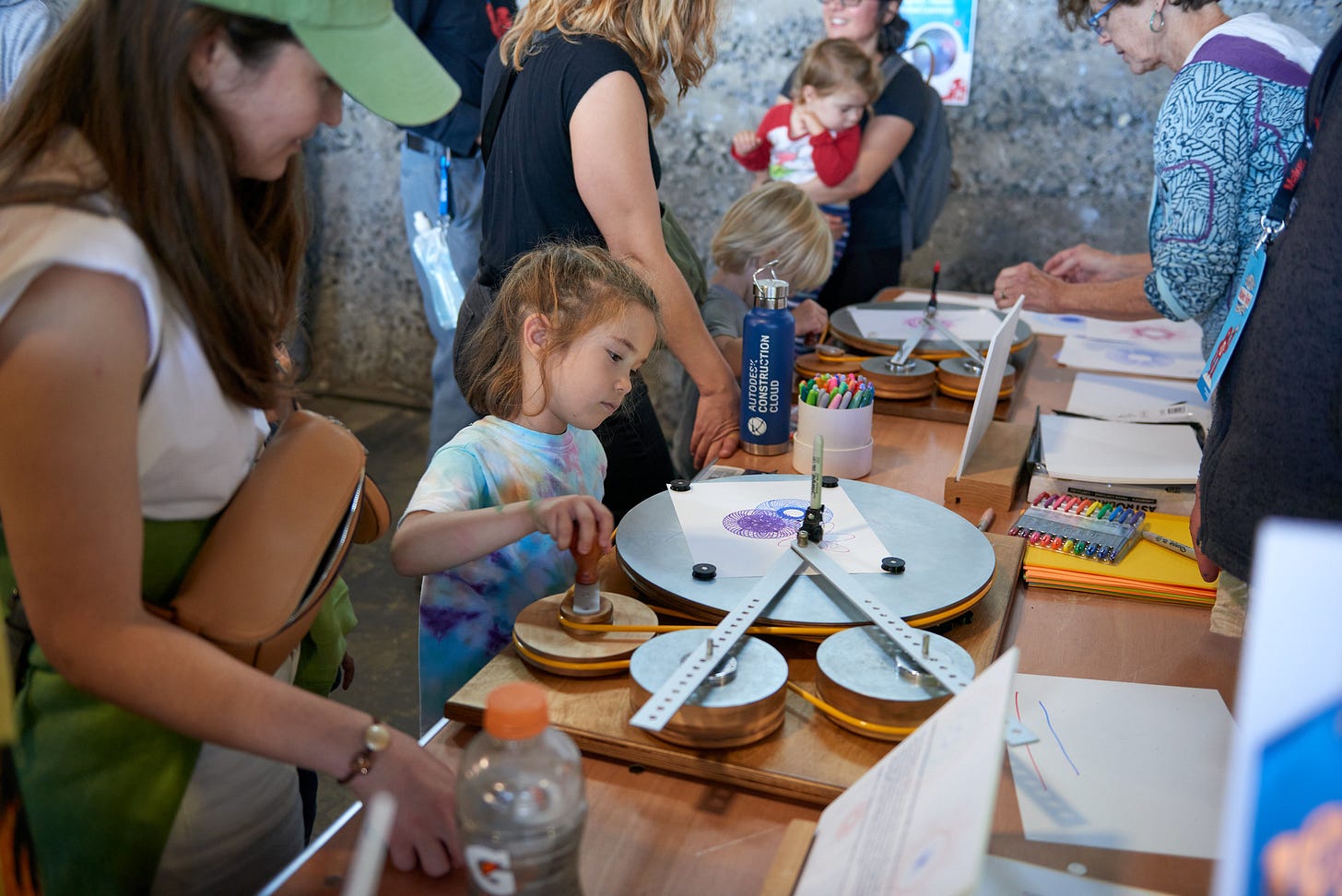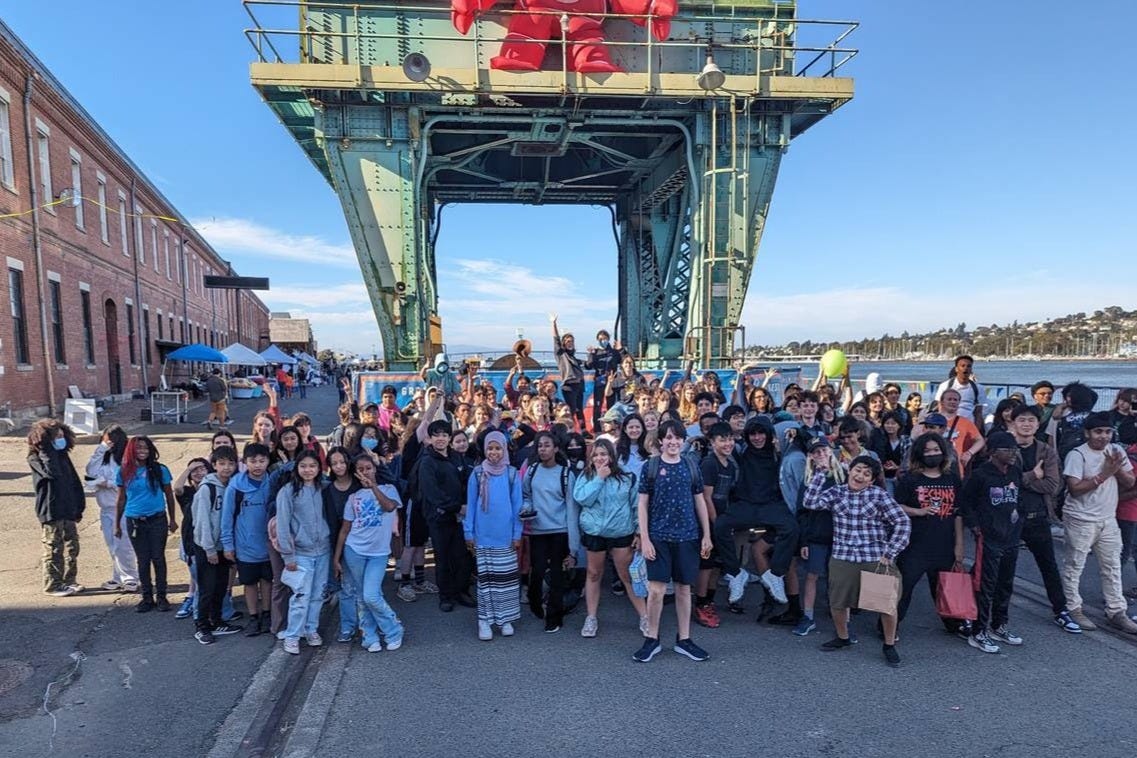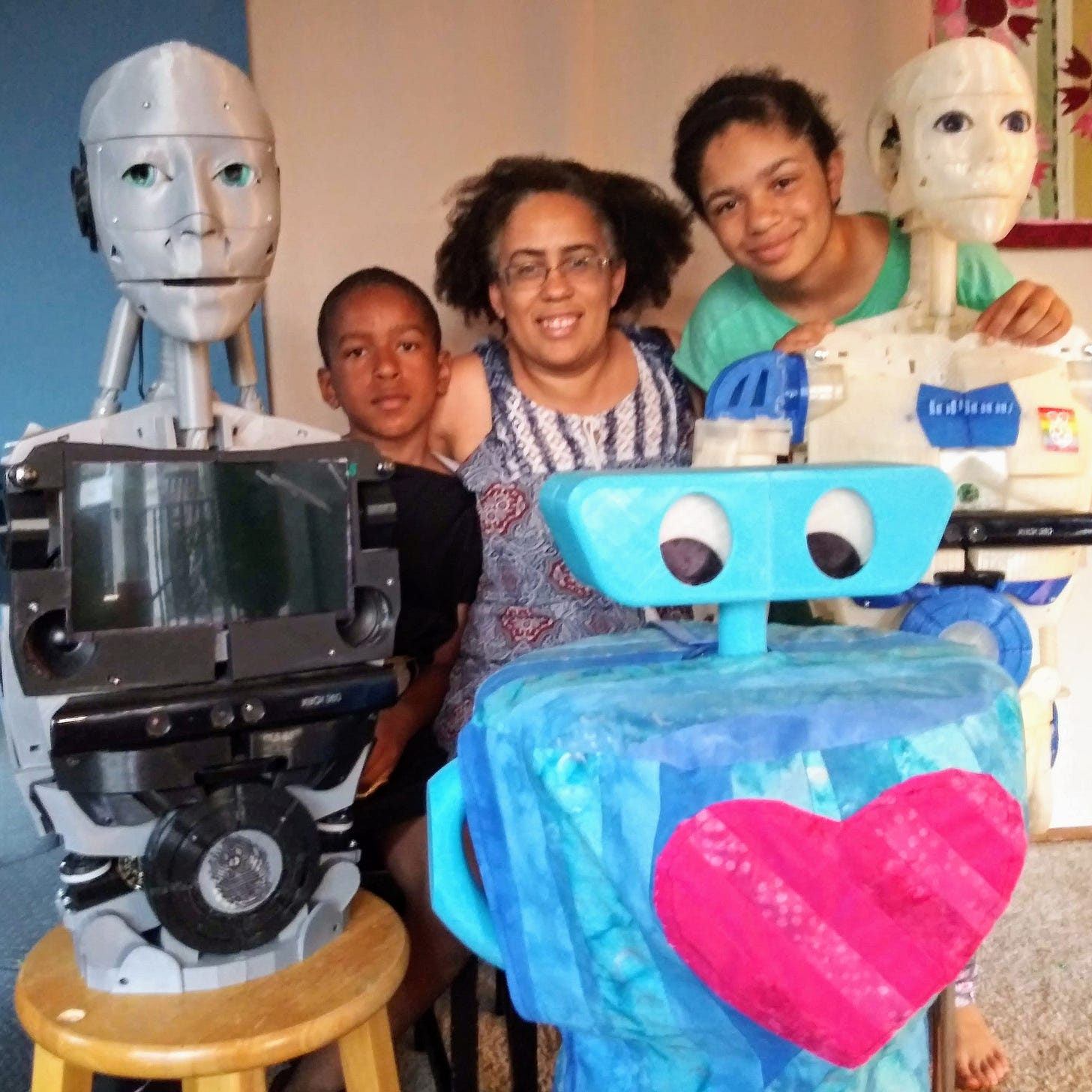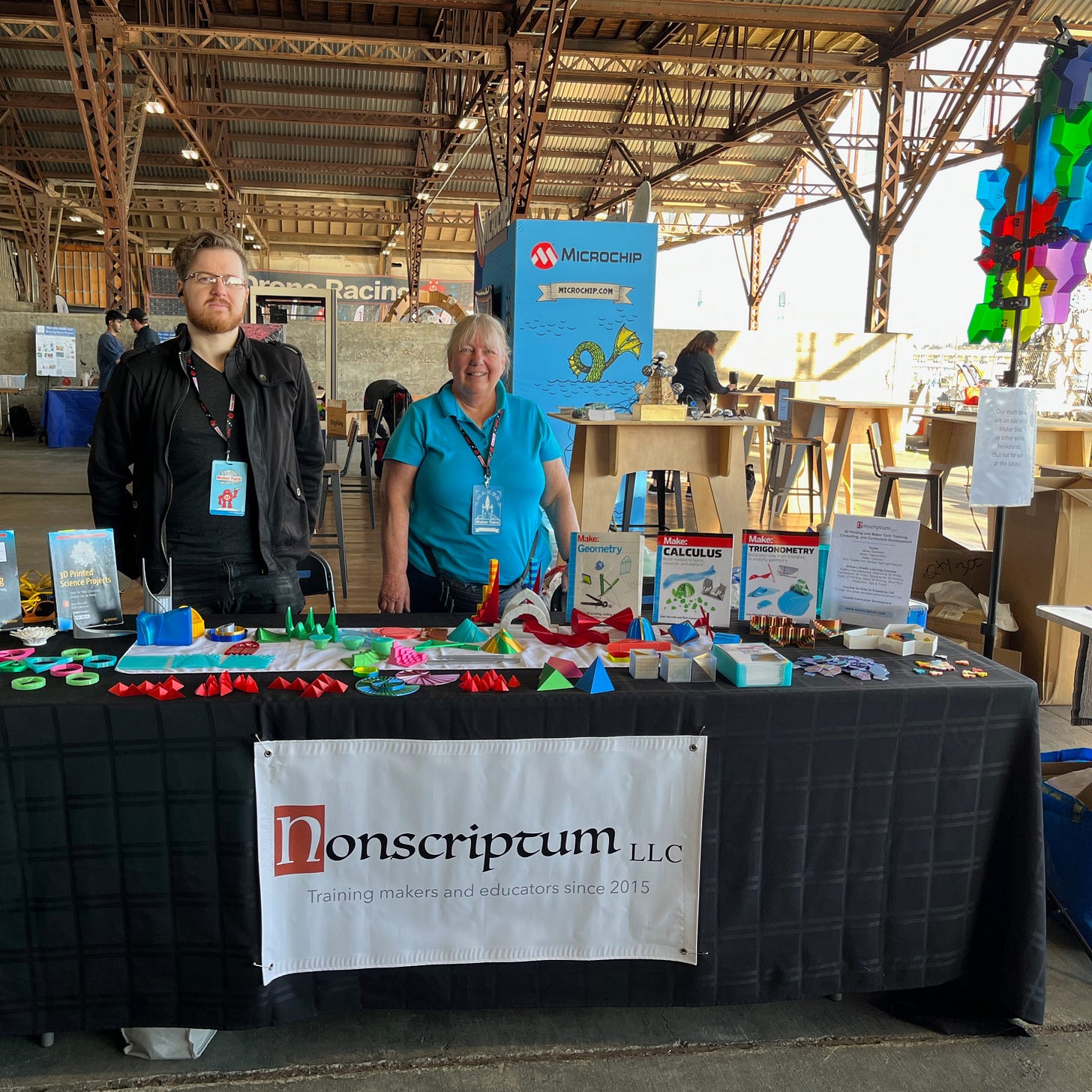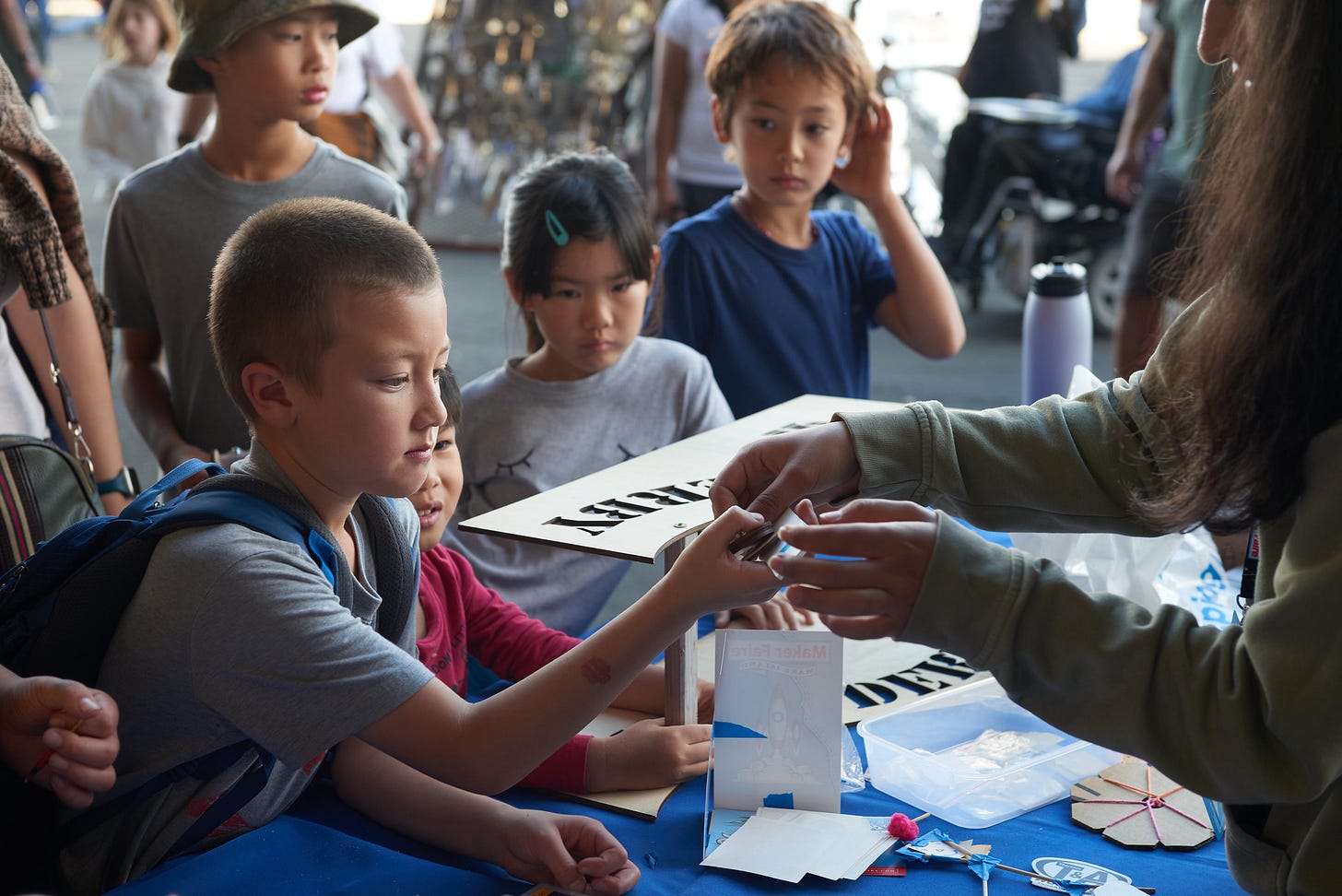An Educator's Guide to Maker Faire Bay Area
There's a lot to learn from Maker Faire. But you have to be there.
Describing what Maker Faire is to people who have never experienced it is difficult. I find pictures do a better job of explaining what it is than I can do with words. The core of Maker Faire is the interaction with some thing — art, craft, robot, gadget, game — and you have the opportunity to talk with the person who made it and ask questions so you can learn more how you might do something like it.
Maker Faire is not intended to be an event specifically for kids nor is it educational. We welcome kids of all ages, sparking everyone’s curiosity and creativity. However, to get more and more kids to experience Maker Faire, we’ve worked with schools to bring students on Friday. We call it Field Trip Friday. We had thousands of students enjoy their Maker Faire experience on Friday last year.
Field Trip Friday
This year, on October 18 from 10am-3pm, Maker Faire will once again welcome teachers, students and chaperones to historic Mare Island in Vallejo.
On Friday, we will have special performances from Eepy Bird’s Diet Coke and Mentos, and also Mario the Maker Magician. We will have hands-on workshops from Kitco’s Nancy Otero and Wonderful Idea Co.’s Ryan Jenkins and other hands-on activities like Junkyard Scramble and Learn to Solder. We will have hundreds of maker exhibits for students to discover and explore.
For Field Trip Friday, there is a group discount rate for groups of 10 or more. People can go to https://makerfaire.com/bay-area/friday for more information and also to apply for the group rates. The discounted group rate is $10 per student and $15 per chaperone.
Young Makers
Young people are not just in the audience for Maker Faire. They come with their own maker exhibits, often with families or school groups.
“Our family of robots started with a 12-year-old's summer goal of building an inMoov open-source humanoid. Now there are 3 robots laughing and entertaining audiences,” D.D. Davis explained.
Young maker and Lego builder Raghav Kheterpal says “I make a lot of custom creations and enjoy building large cities and airports.” His exhibit is “Friendly Neighborhood Lego City.”
Eleven-year-old maker, Aurelius Prochazka, will demonstrate powering “multi-colored LED lights with a penny battery made from household materials.”
Saturday and Sunday Highlights
Here are some presentations on the Make: Live stage of interest to educators.
Saturday
10:30 am, Let's Talk 3D Printing and Tinkercad. Lydia Cline is the author of “The Complete Guide to Tinkercad.”
11:00 am, Tinkering and Making. Ryan Jenkins of Wonderful Idea Co., will present and talk about his new book, The Tinkering Workshop. Kirsten Berbawy of the Innovation Campus at Milpitas High School will talk about her engineering & making program for high school students.
11:30 am, Adaptable Maker Projects for Academic Classrooms. Diane Brancazio and Justin Schmidt of The K-12 Maker Lab at the MIT Edgerton Center’s Office of Experiential Education in Cambridge, MA will talk projects that teachers and students can adapt in various ways.
Sunday
11:30 am, Majoring in Making, Dr. Micah Lande, Associate Professor at the South Dakota School for the Mines, will talk about college programs for makers. Beth Ferguson, an associate professor of design at UC Davis, will talk about “Prototyping for Climate Change.”
1:30 pm, Constraints as a Catalyst: Creative Engineering Under Pressure, Jesse Velez (Raptor House FX) and Ben Eadie (Star Trek Beyond, Ghostbusters Afterlife) discuss the do's and dont's of creative problem solving when time and budgets are a challenge.
2:00 pm, What is a Drawing Machine? Pablo Garcia, Associate Professor at the School of the Art Institute of Chicago, will talk about the history and technology behind drawing machines.
4:00 pm, GIY Materials: Growing Fungi for BioFabrication, Elizabeth Marley of UC Davis talks about the magic of mycelium, mushrooms, and other biological organisms to produce renewable materials.
Here is a complete schedule of presentations, workshop and performances at Maker Faire Bay Area.
Authors of the Making Math series, Joan Horvath and Rich Cameron, will also be on hand, sharing their 3D printed models and explaining how they can be used to teach high school math.
Educators can find lots of activities and projects at Maker Faire that they can do back at school. More importantly, connecting with the maker community will inspire you and amaze you — and that’s something you can bring home with you. Also, if you want to turn an educator into a maker educator, invite them to come with you to Maker Faire. Show, don’t tell.
In 2012, Thomas Vander Ark, wrote: Maker High: Why Every School Should Be a Maker Faire. It’s been twelve years since he asked that compelling question and we keep trying to show what’s possible when you believe that “everyone is a maker.”



